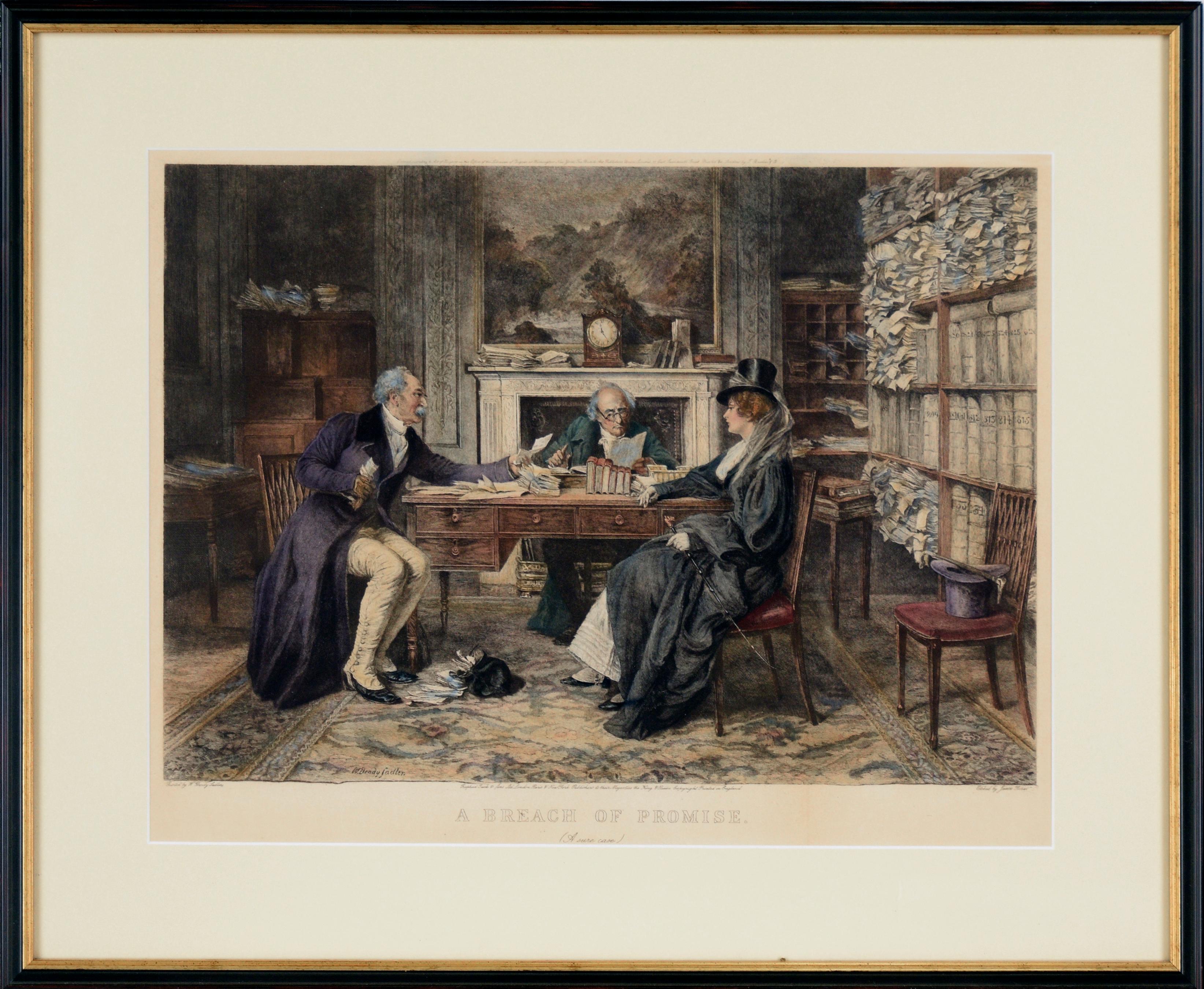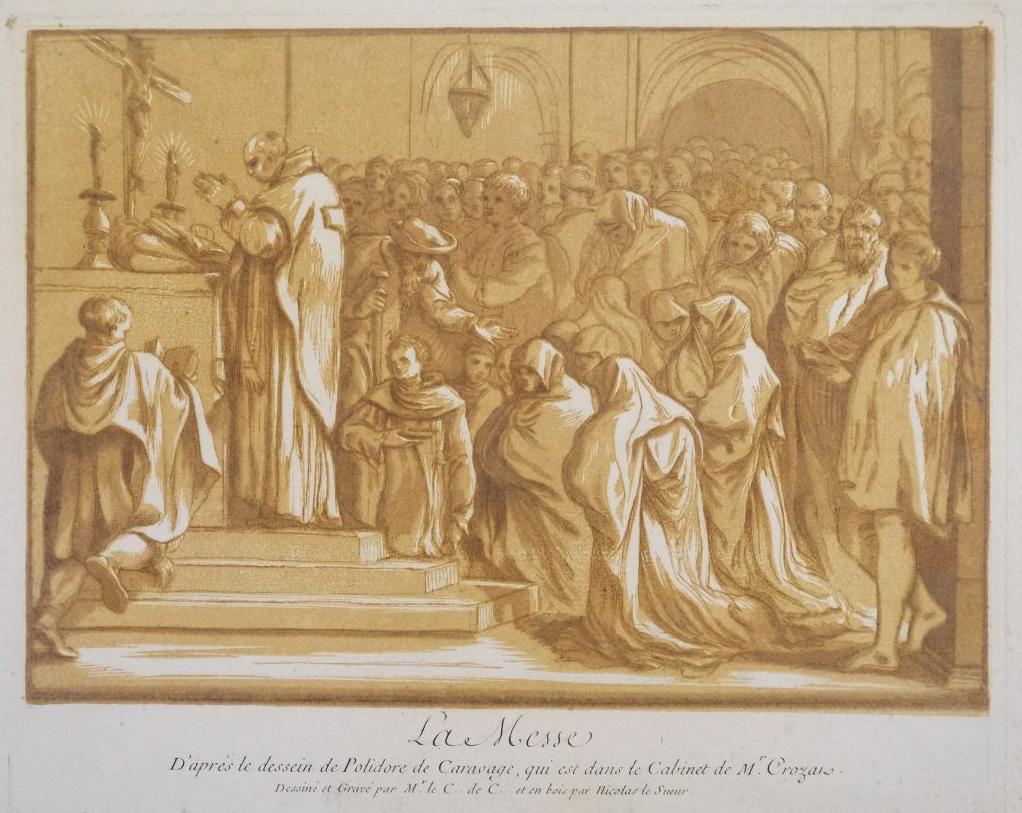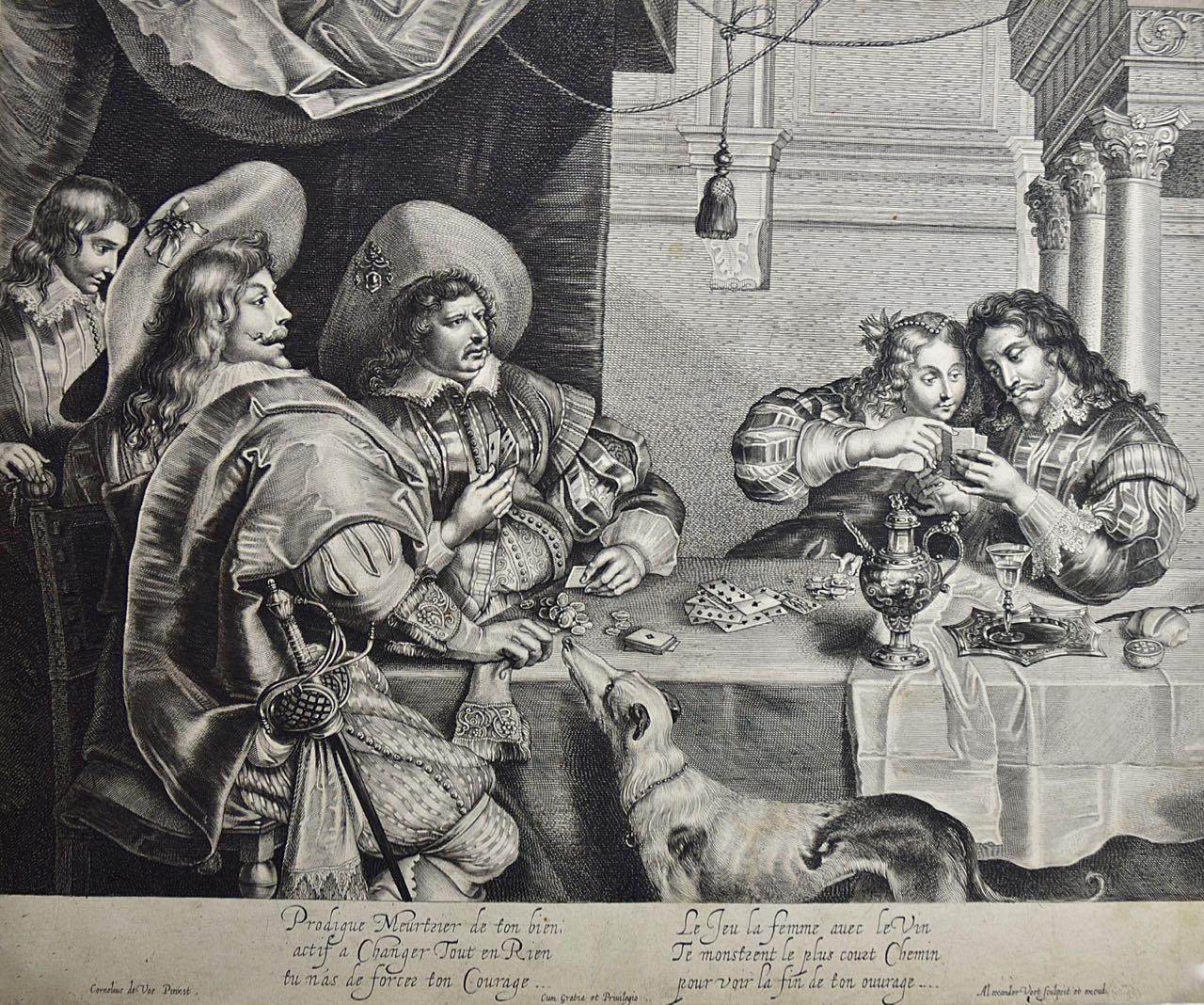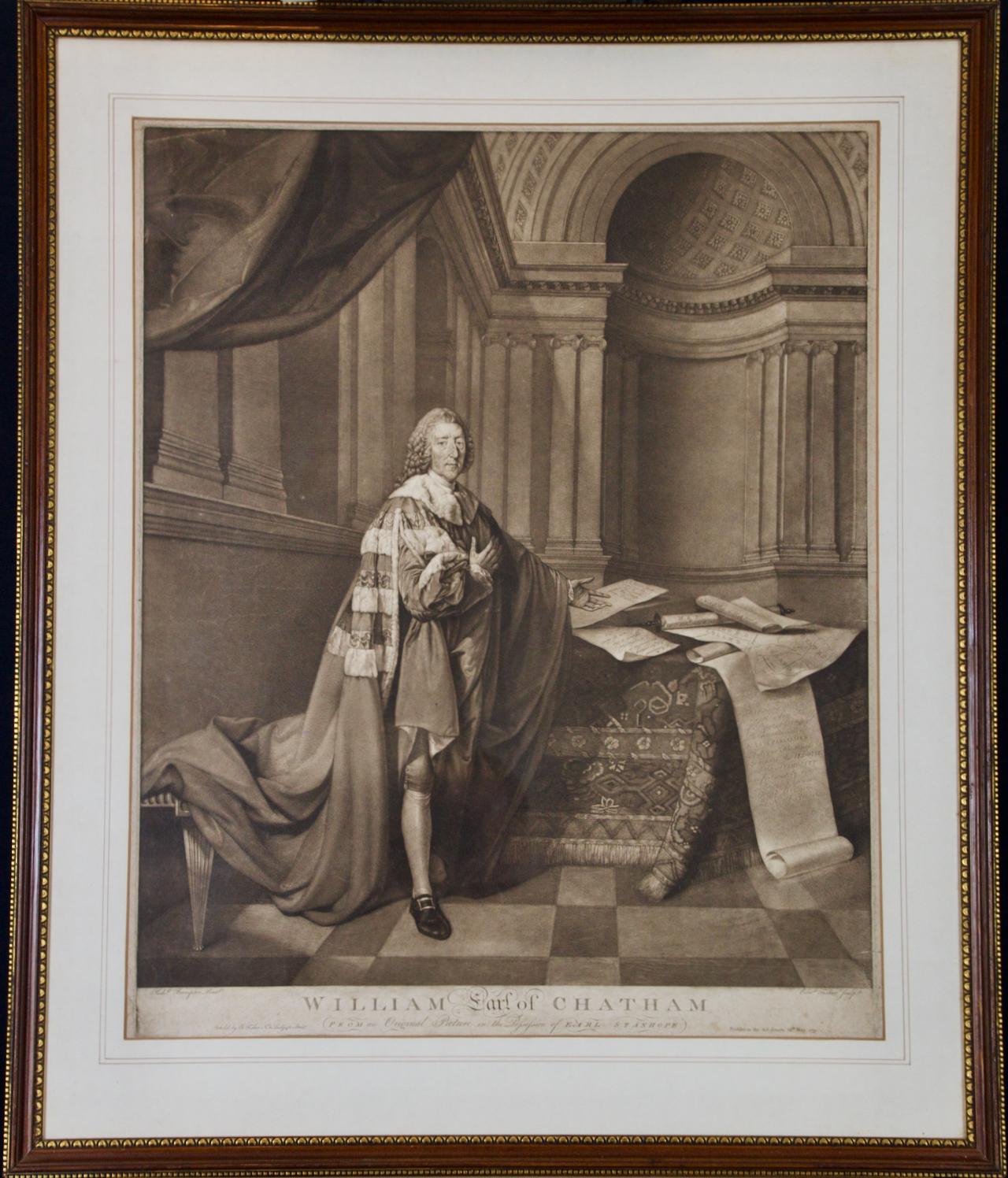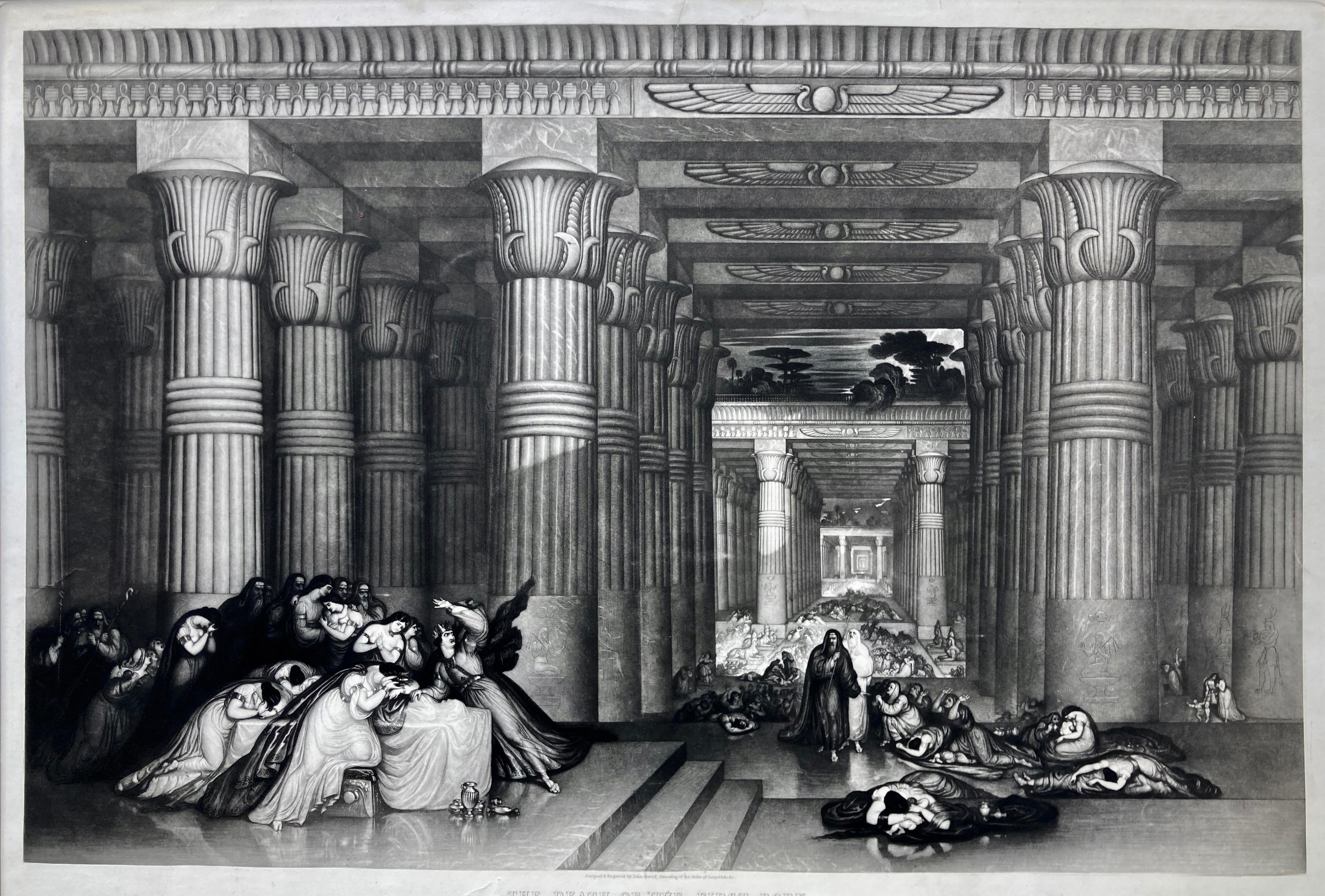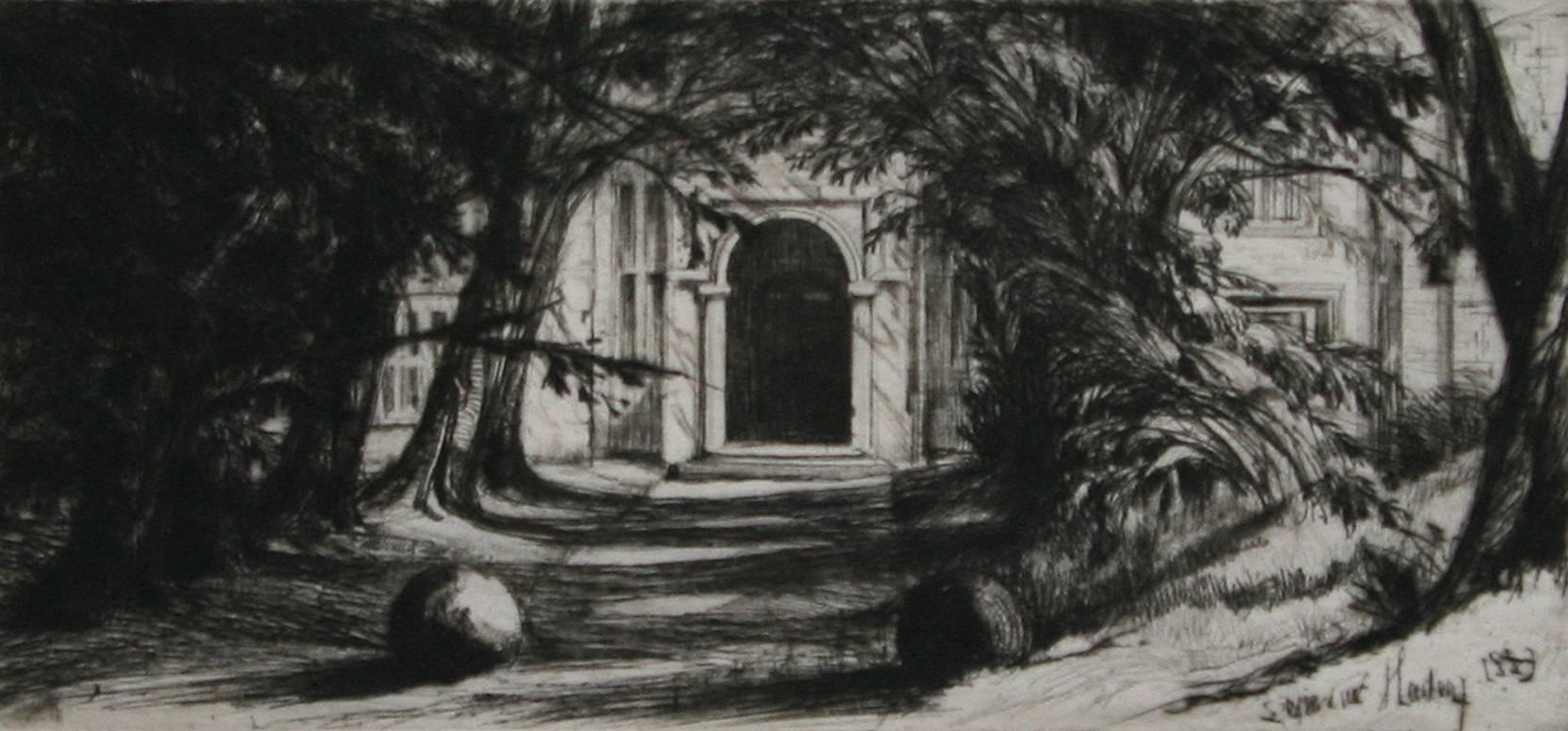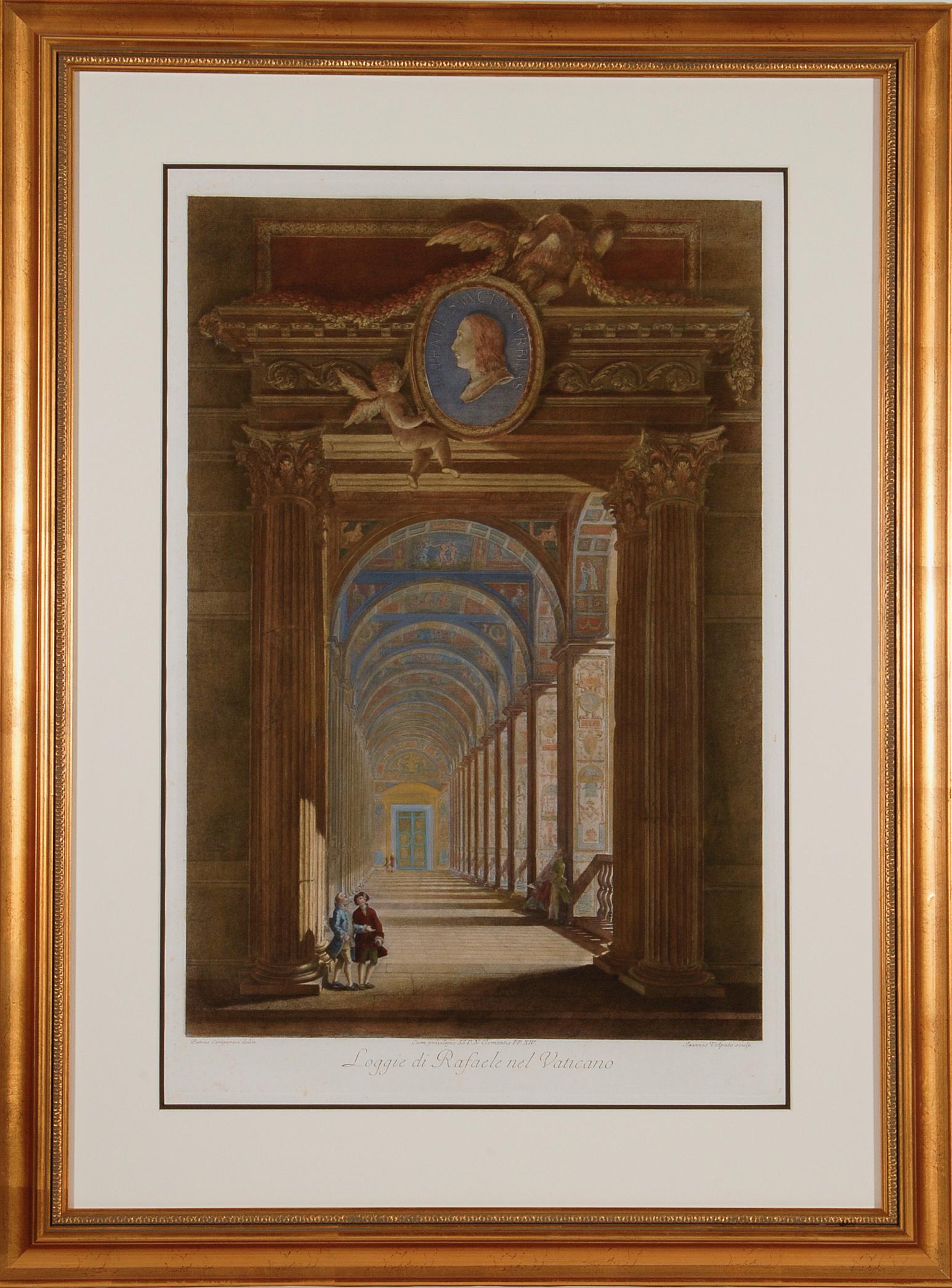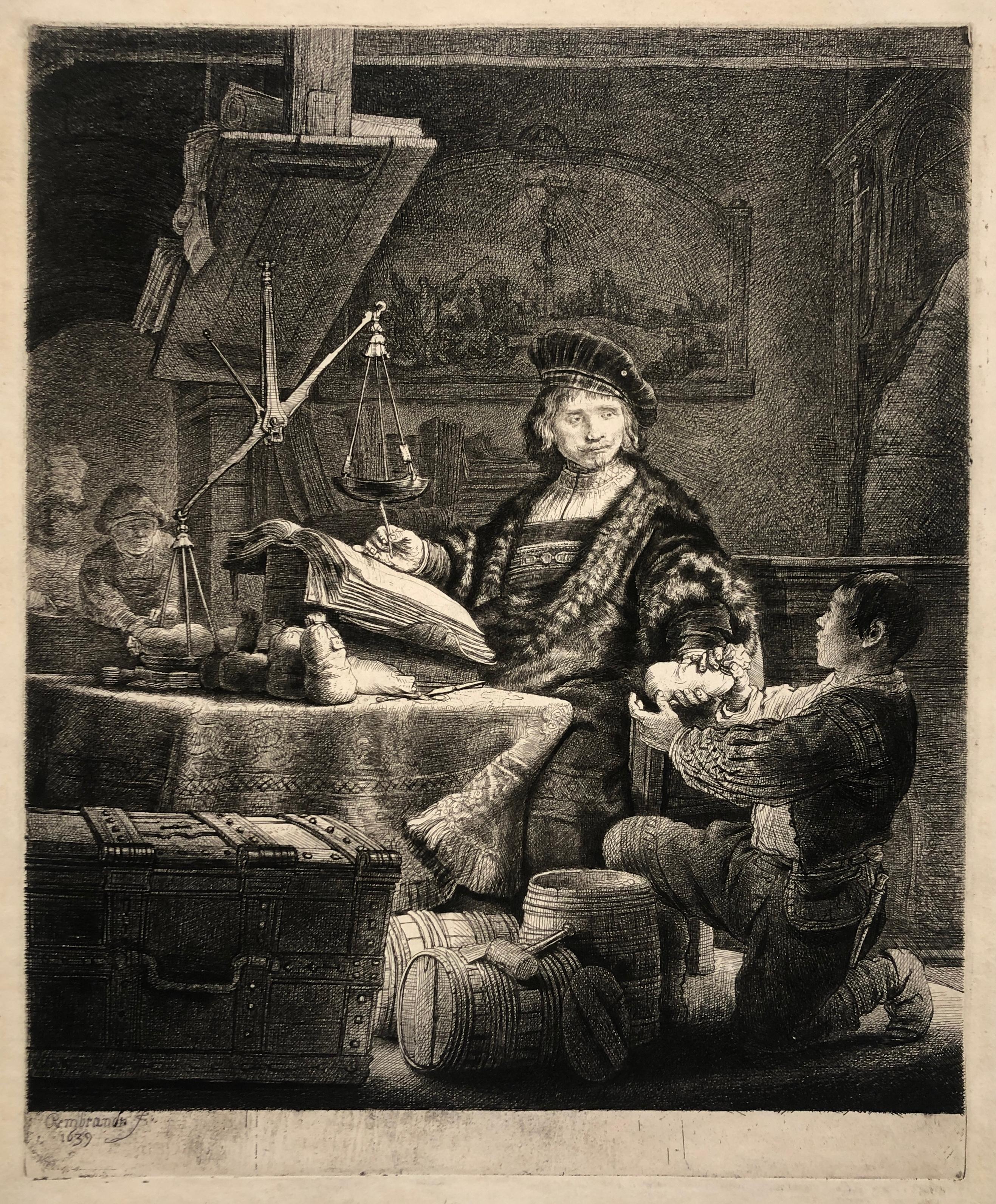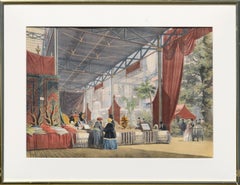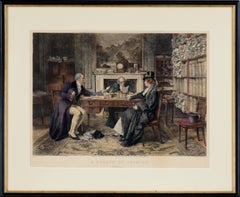
Set of Three Italian 18th Century Hand-Colored Engravings of the Vatican Loggias
View Similar Items
Want more images or videos?
Request additional images or videos from the seller
1 of 17
Giovanni OttavianiSet of Three Italian 18th Century Hand-Colored Engravings of the Vatican Loggias1777-1808
1777-1808
About the Item
- Creator:Giovanni Ottaviani (1735 - 1808, Italian)
- Creation Year:1777-1808
- Dimensions:Height: 51.97 in (132 cm)Width: 23.63 in (60 cm)Depth: 0.79 in (2 cm)
- Medium:
- Movement & Style:
- Period:
- Condition:Excellent overall condition considering that they are made of paper. No cracks, tears or part missing. Some little brown spots on the white paper frame (most of them can be eliminated with a restoration). No dots on the central decorated parts.
- Gallery Location:Firenze, IT
- Reference Number:Seller: Galleria Antonio Esposito di Chiara Esposito1stDibs: LU101113364973
About the Seller
5.0
Vetted Seller
These experienced sellers undergo a comprehensive evaluation by our team of in-house experts.
Established in 1950
1stDibs seller since 2018
More From This SellerView All
- Print Porcelain Plaque Last Supper Painting after Leonardo in Carved Wood FrameLocated in Firenze, ITA lovely early 20th century printed porcelain miniature of The last supper painting after Leonardo Da Vinci in Italian Cenacolo. This Swiss Fr...Category
Early 20th Century Renaissance Figurative Prints
MaterialsPorcelain, Color
- Italian 18th Century Oval Religious Oil on Canvas Painting with Saint DominicBy Francesco de MuraLocated in Firenze, ITThis beautiful Italian 18th Century old masters oil painting on oval canvas with giltwood frame is attributed to Solimena and features a religious scene. In this splendid oval-shaped painting are depicted Saint Dominic...Category
18th Century Old Masters Figurative Paintings
MaterialsOil, Canvas
- Oil on Canvas Painting Portrait of the Italian Noble Family of Zanardi CountBy Lucia Casalini TorelliLocated in Firenze, ITThis museum quality old master oil on canvas formal portrait painting depicting the family of the Count Zanardi is signed by the artist- the female painter Lucia Casalini Torelli- and published in a book dedicated to Casalini Torelli’s workshop and academy. This palatial masterpiece artwork comes directly from the ancient Villa Maraini Guerrieri - Palidano di Gonzaga (Mantua), an historic Italian heritage building owned by the descendants of the family portrayed for more than two centuries, until 1998. The big scale of this oil on canvas masterpiece painting states the relevance of Lucia Casalini Torelli as a painter. The present artwork is a formal family portrait painting that aim to introduce the characters depicted according to their social role in the society. The noble family is all gathered under a loggia overlooking a park, the landscape in the background is partially covered by a beautiful red cloth on the right side. The father stands up and holds the hand of his eldest son, proudly introducing his future heir. The son wears a light-blue dress and red boots, he is depicted in a serious pose holding a black tricorn hat under his arm and a rapier sword on his belt. The mother wears an elegant gold and dark green brocade dress, she is sitting with her youngest daughter on her knees while her second son is by her side. The little daughter wears a lovely long red and dress with white lace and holds an apple on her hand. The son stands next to his mother and is dressed in a brown priestly clothes. This palatial old masters piece was probably painted in 1740 due to the similarities with Cardinal Doria’ s portrait, now on display at the Doria Palace Museum, the official residence of the Prince of Genoa. The painting features original canvas (“prima tela”) and antique original patina, it is in excellent overall condition considering the age, use and its large scale. A formal detailed condition report and the results of the inspection with the UV lamp accompanied by photos is available on request. As well as for its exceptional quality and quite perfect state of conservation, this painting is particularly important and even more valuable both for the artist who painted it and for its absolutely exclusive provenance. Lucia painted the most prominent and powerful noble families of her time, the location of these paintings is unknown to the art market as it is extremely likely that the portraits are still kept in private collections. Furthermore, Lucia was one of the most appreciated artists of her time, so important that she was admitted as a member of the academy at a time when women were forbidden to attend these studies. In 1706, Felice Torelli...Category
18th Century Old Masters Portrait Paintings
MaterialsCanvas, Oil
- Italian Mixed Media Gouache Tempera Theatre Set Costume Silhouette PaintingLocated in Firenze, ITThis set of four antique 19th century Italian mixed media painting on paper hand made with gouache, tempera and watercolor, features several characters silhouettes acting in a theater play. These fine artworks are very unusual, they probably were sketches for theatrical costumes and sets. A rare example of Venetian 19th century theatrical figures in the scenery of Italian opera or characters of the Italian Commedia dell'arte. These four paintings featuring costume design figurines, with the characters acting in a theatrical set, are rendered through the decoupage technique mixing watercolor painting or gouache with tempera on paper. Each tiny figurine is made of paper hand-colored in watercolor, then cut and applied to an antique sheet...Category
19th Century Rococo Mixed Media
MaterialsPaper, Tempera, Watercolor, Gouache
- Italian Vintage Musicians Silhouettes Mixed Media Paintings on PaperLocated in Firenze, ITTwo very pleasant musical themed silhouettes mixed media paintings. These lovely drawings are made of ink and watercolor on paper enriched by a musical score fixed with a red lacquer wax mold...Category
20th Century Modern Mixed Media
MaterialsPaper, Ink, Watercolor
- Italian Painter’s Portrait Engravings on Laid Paper on Canvas in Ebonized FramesLocated in Firenze, ITThese beautiful Italian 18th Centruy engravings on laid paper feature the portrait of two famous Italian painters: Veronese and Guido Reni. They were engraved by Pier Antonio Pazzi a...Category
18th Century Baroque Portrait Prints
MaterialsCotton Canvas, Laid Paper, Engraving
You May Also Like
- Mid 19th Century Figurative Scene from "Great Exhibition of 1851", LondonBy Lowes Cato DickinsonLocated in Soquel, CAHand-colored steel engraving of a the Turkish section of the Great Exhibition of 1851 by Lowes Cato Dickinson (British, 1819-1908). On verso i...Category
1850s Aesthetic Movement Interior Prints
MaterialsWatercolor, Engraving
- A Breach of Promise - Hand Colored Etching on Paper 1900 VictorianBy James DobieLocated in Soquel, CAVictorian-style drypoint etching by James Dobie (British, 1849-1911), after a painting by Walter Dendy Sadler. Printed in London by J. Brooker & Co. and ha...Category
Early 20th Century Victorian Figurative Prints
MaterialsPaper, Watercolor, Drypoint, Etching
- Set of 3 Copper Plate Engravings, by Giovanni Battista PiranesiBy Giovanni Battista PiranesiLocated in New York, NYG. B. Piranesi in his fifties was interested in archaeology and studied in Southern Italy where he produced drawings of Greek architectureCategory
18th Century Old Masters More Art
MaterialsEngraving, Handmade Paper
$6,000 Sale Price36% Off - La Messe (The Mass), after CaravaggioLocated in Middletown, NYChiaroscuro woodcut with underlying engraving on cream laid paper, printed from two blocks in brown and olive. 10 1/4 x 12 3/4 inches (260 x 321 mm) (plate), full margins with the text printing clearly below in black ink. In very good condition with scattered surface soiling and several minor flecks of light discoloration in the margins, especially in the area of the lower right corner, well outside of image area. Unobtrusive notations in pencil in the margin and on the verso. All condition issues are consistent with age. After a drawing of the same title by Polidoro da Caravaggio...Category
Mid-18th Century Old Masters Figurative Prints
MaterialsLaid Paper, Engraving, Woodcut
- Set of Two 18th Century Engravings from William Hogarth's "Analysis of Beauty"By William HogarthLocated in Alamo, CAThe two plates in this set were created utilizing both engraving and etching techniques by William Hogarth in 1753, originally as illustrations of his book on aesthetics, entitled "Analysis of Beauty". Due to their popularity, these plates were later published separately. The publication line in the lower right reads: "Designed, Engraved, and Publish'd by Wm. Hogarth, March 5th 1753, according to Act of Parliament." Hogarth's original copper plates were refurbished where needed by James Heath and engravings were republished in London in 1822 by Braddock, Cradock & Joy. This was the last time Hogarth's copper plates were used for printing. Most were melted during World War I for the construction of bombs. These large folio sized "Analysis of Beauty" engravings are presented in antiqued gold-colored frames with double mats; the outer silk mats are light brown-colored and the inner mats are dark brown. Each frame measures 27.38" x 31.25" x 1.13". There is one tiny spot in the right margin of plate 1 and another in the lower margin; the latter could be from the printing process. The prints are otherwise in excellent condition. The "Analysis of Beauty" series is in the collection of many major museums, including: The British Museum, The Metropolitan Museum of Art, The Tate Museum, The Chicago Art Institute and The Fine Arts Museums of San Francisco. The first engraving (Plate 1) depicts a courtyard of statues which is filled with some of the most famous works of classical sculpture. The most important sculptures are surrounded by less impressive works. The Medicean Venus (#13) is in the center with a statue of Julius Caesar (#19) to the right, elevated on a pulley with a short, overdressed Brutus stands over the falling Caesar. The Apollo Belvedere (#12) is next. A judge stands to the right with his foot on a cherub (#16). Another crying cherub holds a gallows and wipes his tears with the judge's robe. A sphinx (#21) and the drunken Silenus (#107) are below the Venus. Michaelangelo's torso (#54) and a statue of Antonius (#6) are seen in the foreground. The Farnese Hercules (#3) and a bust of another Hercules (#4) under two statuettes of Isis are also included in the scene. The key to these objects is included in the form of a serpentine line winding around a cone (#26), Hogarth's "Line of Beauty". For Hogarth the winding line is an essential element of beauty in art. Hogarth's theory of beauty is communicated in this plate. Plate 2 is thought to represent the Wanstead Assembly, with the Earl of Tynley and his household. It is an adaptation of a scene in the Happy Marriage series, which complements Hogarth's Marriage à la Mode...Category
Mid-18th Century Old Masters Interior Prints
MaterialsEtching, Engraving
- The Heidelberg Tun: A Framed 17th Century Engraving of a Huge Wine CaskLocated in Alamo, CA"The Heidelberg Tun" is a 17th century engraving by an unknown artist. It depicts a famous huge ornamental wine cask that resided in the wine cellar of Heidelberg Castle. The cask shown here, built in 1664, is the second of four Heidelberg Tuns; the first was destroyed during the Thirty Years' War, between 1618 and 1648. This cask was built in 1664 when Karl Ludwig ordered Heidelberg cellar master...Category
Late 17th Century Old Masters Interior Prints
MaterialsEngraving
Recently Viewed
View AllMore Ways To Browse
Neoclassical Decorative Element
3 Panel Wood Divider
Antique Handwriting
8 Panel Divider
White Wall 3d Geometric
Sanzio Raphael
Architectural Engravings Set Of Three
Coloured Engravings Set
Decorative Wall Panels Set Of 3
Set Of 2 Decorative Wall Panels
Ac Engraving
Vatican Loggias
Raphael Loggia
Diffusion Panel
Bassano Fruit
Window Drapes
Antique Media Center
St Marks Cathedral

